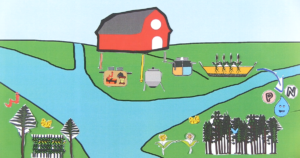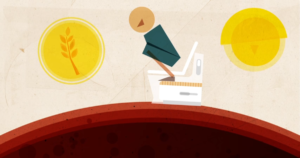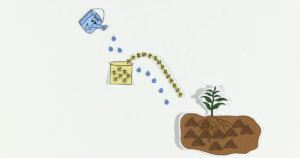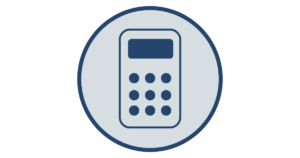This post is also available in: Español (Spanish) Français (French) Deutsch (German) اردو (Urdu)
The following calculator provides the user with the opportunity to estimate the potential fertilisation area, if faeces and urine from a household are applied. The recommended integrated decentralised wastewater system would use this fertilisation potential for non-food plants and long term soil enrichment.
Faeces Application:
Faeces are rich in phosphorous (P), potassium (K) and organic matter and can contribute to non-food crop production both by their fertilising effect and by their soil-improving effect. The proportion of nitrogen that is in mineral form in faeces varies largely between the different purification strategies and can be lost in form of gases. Therefore, only the Phosphorus-fertilisation of Terra Preta Sanitation compost is considered.
Please find more information in this literature review.
According to Jönsson et al. (2004), the potential yearly amount of nitrogen and phosphorus in faeces per person in Sweden is 550 g/(a·person) of nitrogen and 183 g/(a·person) of phosphorus. The yearly amount of nitrogen and phosphorus in faeces per household is calculated from the potential yearly amount of nitrogen and phosphorus in faeces per person multiplied by the number of household members.
According to research done in Tanzania by Krause et al. (2015), total phosphorus in TPS compost is found to be 3.6 times the total phosphorus in faeces compost. The yearly faeces fertilisation area of TPS compost per household is calculated from the potential yearly fertilisation area of faeces per person (900 m2 for phosphorus) multiplied by the number of household members. The yearly organic content supply area of TPS compost per Household is calculated from the potential yearly organic content supply area of TPS compost per person (4.5m2 /(a·person)) multiplied by the number of household members.
This calculator takes as a reference point the research done by Jönsson et al. (2004), the amount and nutritional value of faeces and urine are based on the data of the Swedish population. It is important to note that amount and nutritional values of faeces and urine are subjected to variation in different regions of the world and are highly dependent on the nutrient uptake and diet of the population. The nutritional value of wastewater streams improves the quality of the urine and faeces to be used as fertilisers for non-food crops. Therefore, the provided results should only be considered as a reference point when referring to the potential for nutrients recycling in integrated decentralised wastewater treatment.
The values used in this calculation tool are based on the following studies.
Jönsson, H, Richert, A, Vinneraas, B & Salomon, E 2004, Guidelines on the use of urine and faeces in crop production, EcoSanRes Publication Series, 2nd edn, Stockholm Environment Institute, Stockholm, Sweden.
Krause, A, Kaupenjohann, M, George, E & Koeppel, J 2015, ‘Nutrient recycling from sanitation and energy systems to the agroecosystem- Ecological research on case studies in Karagwe, Tanzania’, African Journal of Agricultural Research, vol. 10, no. 43, pp. 4039–5.
Nutrient Recycling Potential Calculator for Households Using Integrated Decentralised Wastewater Treatment Systems by Usama Khalid and Ruth Schaldach is licensed under a Creative Commons Attribution-ShareAlike 4.0 International License.





